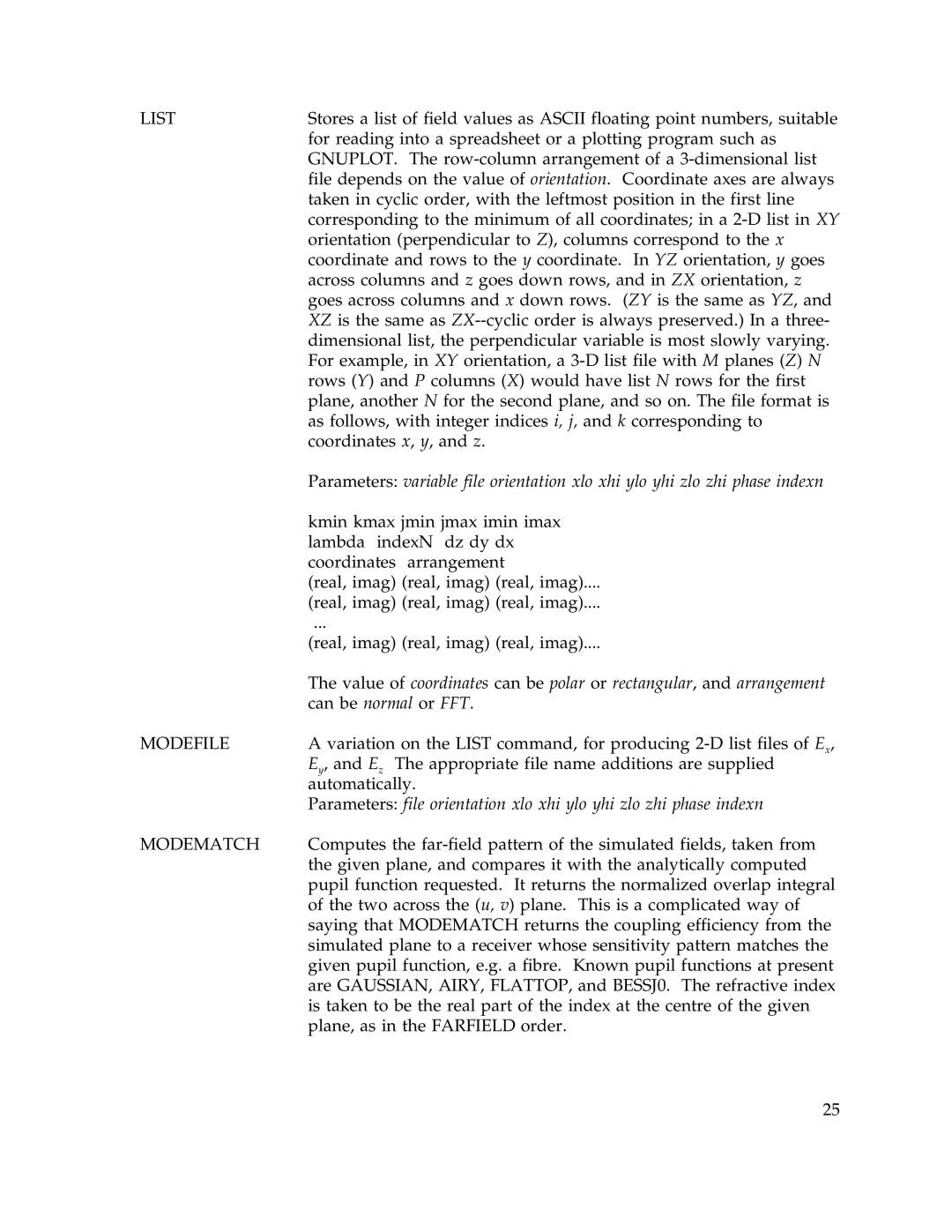LIST | Stores a list of field values as ASCII floating point numbers, suitable |
| for reading into a spreadsheet or a plotting program such as |
| GNUPLOT. The |
| file depends on the value of orientation. Coordinate axes are always |
| taken in cyclic order, with the leftmost position in the first line |
| corresponding to the minimum of all coordinates; in a |
| orientation (perpendicular to Z), columns correspond to the x |
| coordinate and rows to the y coordinate. In YZ orientation, y goes |
| across columns and z goes down rows, and in ZX orientation, z |
| goes across columns and x down rows. (ZY is the same as YZ, and |
| XZ is the same as |
| dimensional list, the perpendicular variable is most slowly varying. |
| For example, in XY orientation, a |
| rows (Y) and P columns (X) would have list N rows for the first |
| plane, another N for the second plane, and so on. The file format is |
| as follows, with integer indices i, j, and k corresponding to |
| coordinates x, y, and z. |
| Parameters: variable file orientation xlo xhi ylo yhi zlo zhi phase indexn |
| kmin kmax jmin jmax imin imax |
| lambda indexN dz dy dx |
| coordinates arrangement |
| (real, imag) (real, imag) (real, imag).... |
| (real, imag) (real, imag) (real, imag).... |
| ... |
| (real, imag) (real, imag) (real, imag).... |
| The value of coordinates can be polar or rectangular, and arrangement |
| can be normal or FFT. |
MODEFILE | A variation on the LIST command, for producing |
| Ey, and Ez The appropriate file name additions are supplied |
| automatically. |
| Parameters: file orientation xlo xhi ylo yhi zlo zhi phase indexn |
MODEMATCH | Computes the |
| the given plane, and compares it with the analytically computed |
| pupil function requested. It returns the normalized overlap integral |
| of the two across the (u, v) plane. This is a complicated way of |
| saying that MODEMATCH returns the coupling efficiency from the |
| simulated plane to a receiver whose sensitivity pattern matches the |
| given pupil function, e.g. a fibre. Known pupil functions at present |
| are GAUSSIAN, AIRY, FLATTOP, and BESSJ0. The refractive index |
| is taken to be the real part of the index at the centre of the given |
| plane, as in the FARFIELD order. |
25
